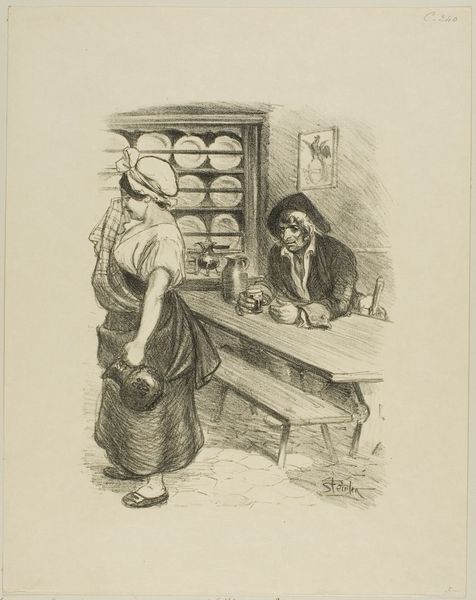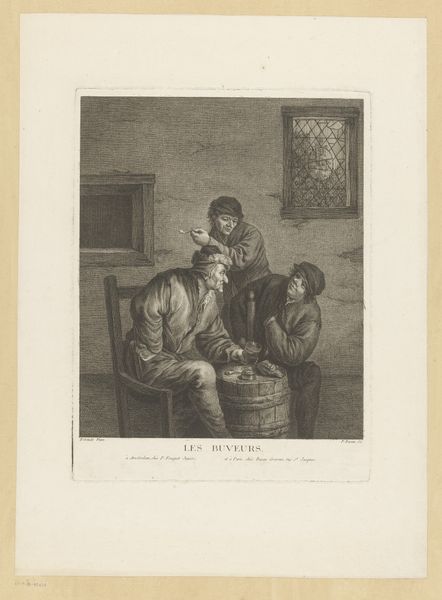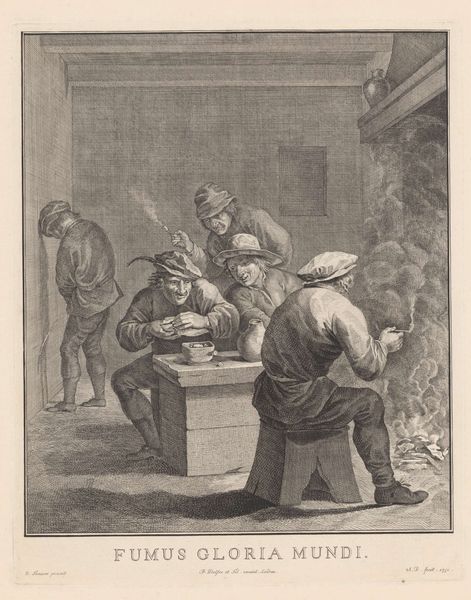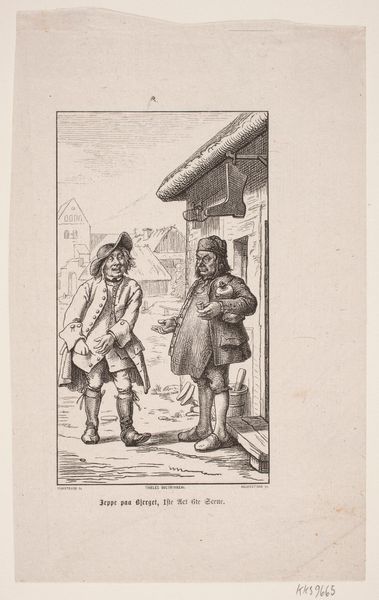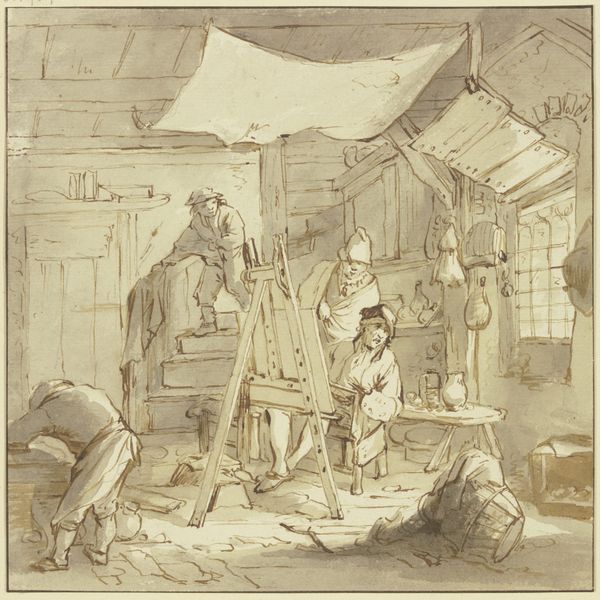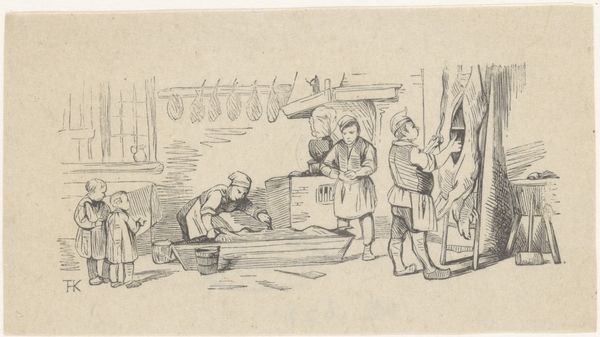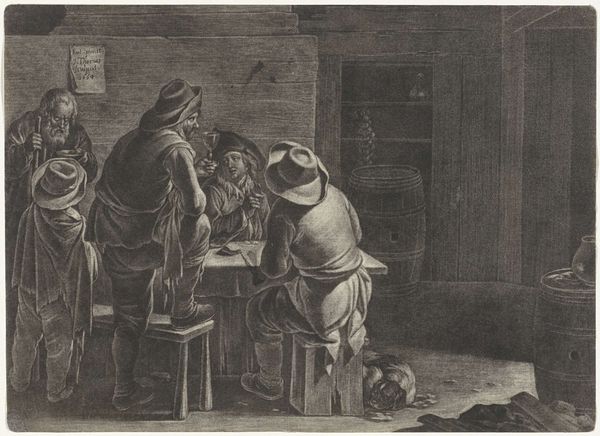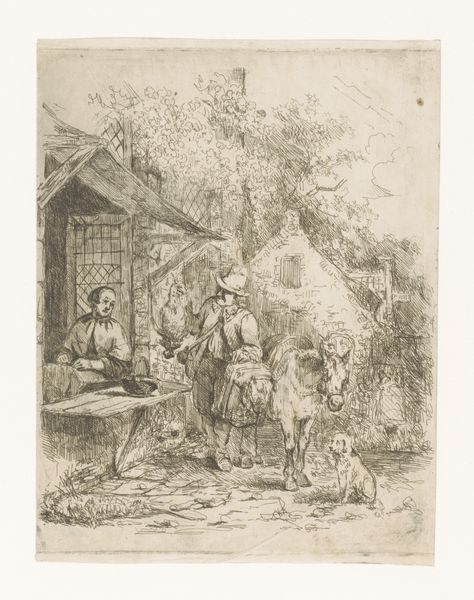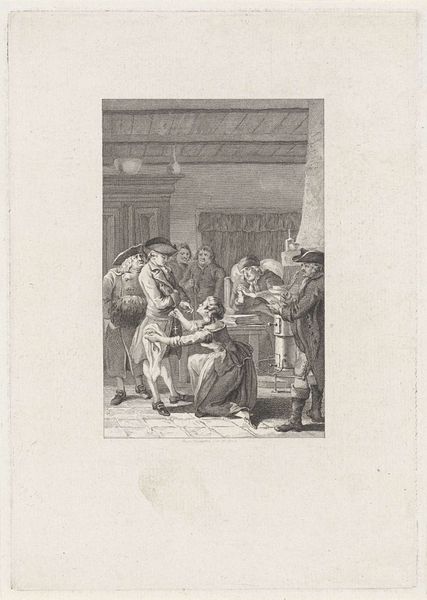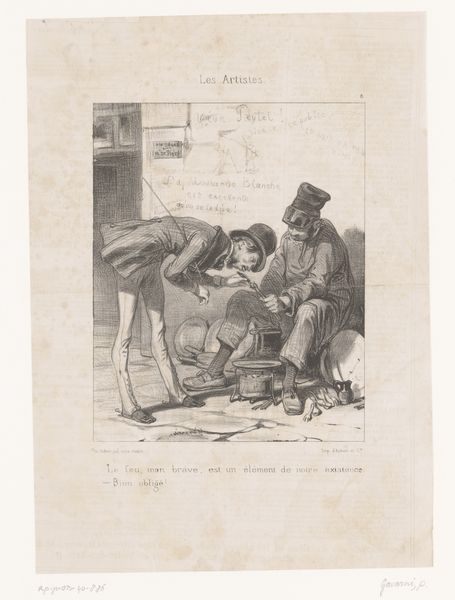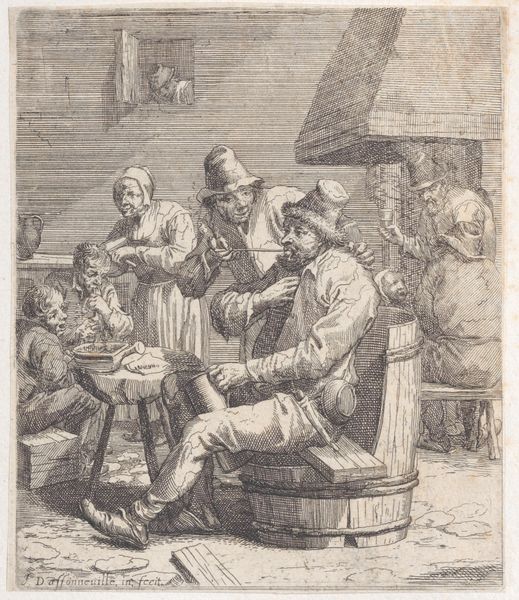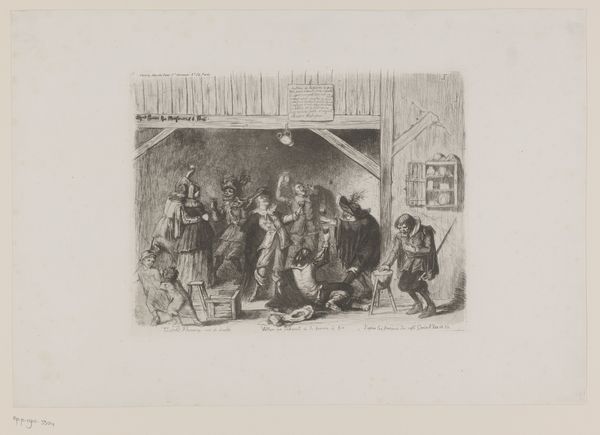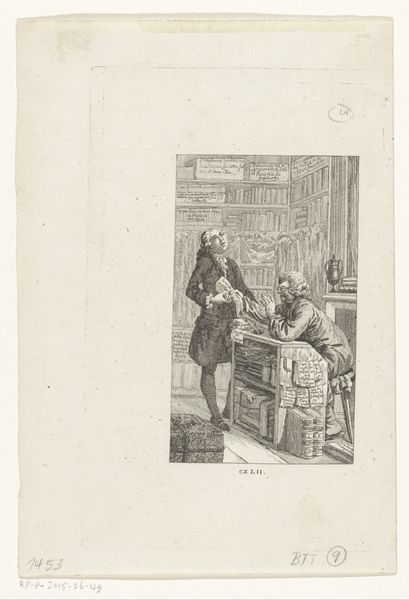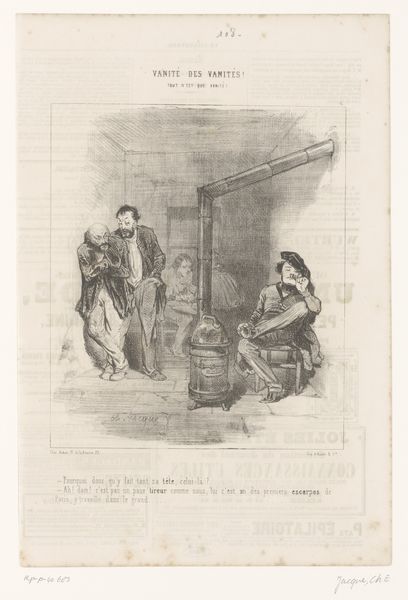
drawing, lithograph, print, paper, ink
#
portrait
#
drawing
#
lithograph
# print
#
french
#
caricature
#
figuration
#
paper
#
ink
#
romanticism
#
line
#
genre-painting
Copyright: National Gallery of Art: CC0 1.0
Curator: This is Honoré Daumier's lithograph, dating to around the 19th century, titled "C'est pesque toujours a la halle…", which translates roughly to "It is almost always at the market…" The work is rendered in ink on paper. Editor: Immediately, the contrasting characters catch my eye, this vendor with her headscarf and the lanky fisherman in what looks like the fish market; their transaction is framed against a rather bleak, almost cynical backdrop. The composition has such weight. Curator: It is interesting to examine Daumier’s choice of lithography for this particular piece. The medium allowed for relatively quick and inexpensive reproduction, enabling wider distribution and social commentary targeting, predominantly, the bourgeois audience. Think of this in terms of accessible artistic activism, challenging class structure in a society grappling with modernity. Editor: Yes, that political commentary comes through. The marketplace as a stage, you know? A man struggling, attempting to procure fish not by fishing but through buying, in what seems like a rigged game, dominated by market forces. The grim faces emphasize social disparity. The very materials—paper and ink, cheaply circulated, speak volumes about accessibility of critique. The title itself mocks Parisian fisherman who obtain their fish at the market. Curator: And we can interpret the print as both a reflection of, and an intervention in, the public sphere. By placing this image in circulation, Daumier invites the viewer to consider not only the scene depicted but also the socio-economic realities of 19th-century Paris. Editor: This isn’t merely documenting reality, but actively shaping public opinion around the production and consumption—art included. I am struck by the man in the background that carries all sorts of heavy looking items strapped to his back as if to point at laborers hard at work behind this mundane scene of the sale of fish. The stark lines almost mock a romanticised vision, highlighting that harsh labor, those exchanges, depend on an entire structure and that structure isn't all rosy, as implied in this piece's line quality and sombre subject matter. Curator: Indeed, viewing Daumier's lithograph from both a historical and material perspective gives a deeper appreciation not only to Daumier's critique, but to our role in understanding art’s continuing relevance to contemporary discussions on consumption. Editor: I agree, and to Daumier’s critical insights into how power operates even in something as seemingly commonplace as purchasing fish at the market. It’s a scene with such raw energy and the print underscores our contemporary engagement and continued inquiry into the system behind these images.
Comments
No comments
Be the first to comment and join the conversation on the ultimate creative platform.
